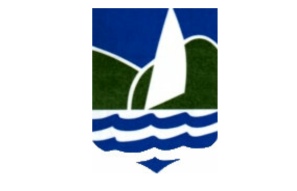SNOW REMOVAL ON OUR ROADS
The month of September heralds the start of preparations for snow removal on Village roads.
For several years now, the Municipality has been responsible for the snow removal of Route 108, which ensures the continuity of the overall snow removal plan. The revenues generated by the contract with the Ministère des transports du Québec (MTQ) allow us to pay for the cost of the equipment required for snow removal as well as the abrasives and the salaries of the employees assigned to this task.
Several challenges are related to snow removal. The territory is composed of roads along the lake or larger areas, steep slopes, parking lots, sidewalks, bridges, etc. Each element requires a different approach. Each element requires a different approach. For example, a bridge should be cleared of snow while avoiding sending snow into the lake whenever possible. Parking lots must be cleared before workers arrive in the early morning. Some roads ice up faster than others. Each time, we are concerned with ensuring the safety of users while being respectful of the environment.
Some roads are plowed in priority due to the number of users. Several passes are necessary for certain roads and we have to answer to precise rules during storms, for example a first pass is made on route 108 to clear the snow. A second pass is made a few hours later to clear the shoulder. In the following days, we have to clear the guardrails.
Following requests from citizens to the Municipal Council, we approached the MTQ to establish Route 108 as a “Winter Ecoroute”.
A winter ecoroute is an alternative maintenance method during the winter season in order to reduce the environmental impacts of de-icing agents on one or more areas vulnerable to road salts. This maintenance approach focuses on increased scraping and the use of abrasives in critical areas of the network to ensure road safety. However, in certain circumstances, the use of road salts remains the preferred method, particularly when the pavement is icy, as well as at critical locations such as slopes, curves and stops.
To qualify as an ecoroute, it is necessary to ensure that safety will be respected. This is done through safety studies to assess the type of traffic, flow, grades, number of accesses, etc. Second, there must be unanimous endorsement from the municipalities through which the road passes.
According to the MTQ, there are 3 levels of de-icing for the roads under its responsibility (such as Route 108). The levels are established according to the number of vehicles:
1. 2,500 or more vehicles per day: Full width de-icing
2. Between 500 and 2,500 vehicles per day: Center of the road de-icing
3. Less than 500 vehicles per day: Hardened snow base.
In our case, we need the endorsement of the Township of Hatley, Ste-Catherine de Hatley and ourselves. In terms of safety, between 500 and 2,500 vehicles per day use Route 108. The de-icing should therefore be done in the center of the road. Further analysis of the snow removal route with steep grades, a few short radius curves and a relatively high vehicle flow seems to show that it would be risky to implement an ecoroute on 108.
This does not prevent us from doing everything we can to reduce the amount of salt or sand used on our roads as well as on the 108 (naturally respecting the minimum standards established by the MTQ in our maintenance contract).
This is why we will be initiating a pilot project to reduce abrasives and de-icing salt on some of our roads this winter.
Flat roads will be the primary focus of this pilot project. Sidewalks, intersections, roads with a slope or curve will be excluded from the project for obvious safety reasons.
The list of roads affected by this pilot project will be announced in the coming weeks and will be disseminated through our usual communication tools, namely our Facebook page, our website and the newsletter. In addition, signs will be installed on the targeted roads to allow users to adapt their driving.
